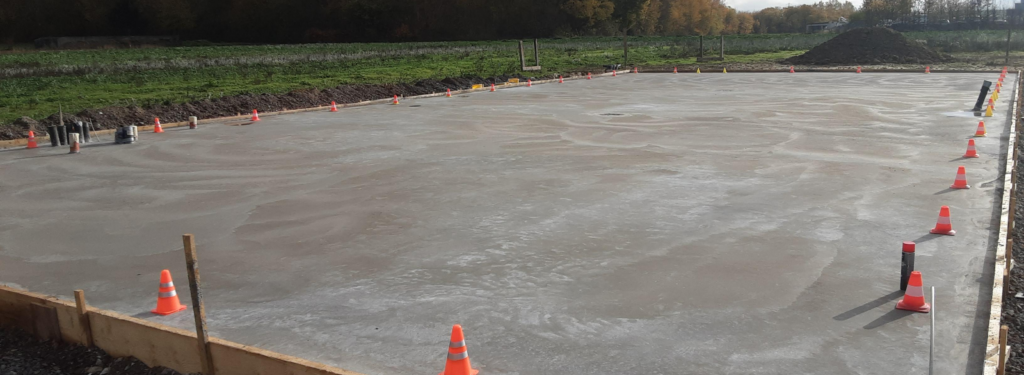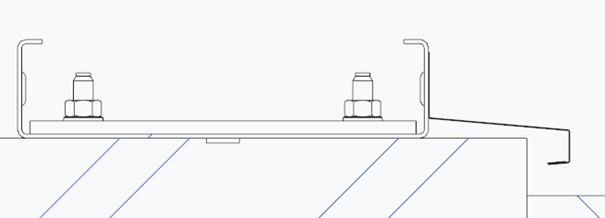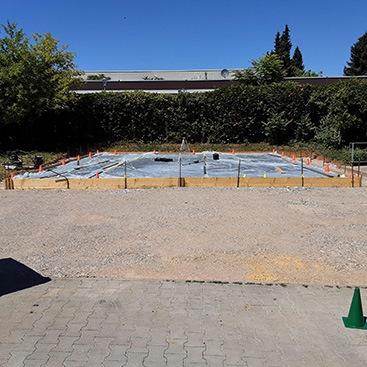Storage buildings
8 tips to keep the temperature stable in your storage building
8 min reading time

A concrete foundation is the best base for your storage building. A well-laid concrete foundation ensures the best connection of your storage building to the ground. This minimizes the risk of water ingress into the storage building. Kroftman does not lay concrete foundations themselves. You can hire a construction company of your choice for this. We understand that an important part of the purchase and construction of your storage building is the concrete foundation, and you would like to know more about it. In this blog, you will read more about:
1. What is the importance of a good foundation for your storage building?
2. What should a good foundation for your storage building meet?
3. Why do you need a structural engineer?
4. What types of foundations are there for your storage building?
5. A strip foundation with or without a floor, which is better for your storage building?
6. Can you make the concrete foundation for your storage building yourself?
7. What does a concrete foundation for your storage building cost?
The foundation is literally and figuratively the foundation under your storage building. A strong foundation is crucial for the usability and durability of the storage building built on it. If your foundation sinks, the storage building will also sink. This can cause, for example, doors not to close properly. A good foundation must first of all be able to bear the weight of the storage building and the snow load. Additionally, a good foundation must withstand tensile forces. The wind braces in a storage building ensure that the storage building remains upright when the wind blows on it. These forces are transferred to the foundation through these wind braces. This places tensile forces on the foundation. The foundation is the link with the ground. If the foundation is not strong enough, it may detach from the ground or a part of the foundation may break off. A good foundation is calculated for all these forces.


A lot depends on a sturdy foundation. In the static calculation you receive with your storage building, you can find the loads that your foundation must be able to withstand. A (structural) engineer can then advise you on what concrete to use and how thick the foundation should be to meet these requirements. This also depends on how strong the ground is on which you place the foundation. He calculates and draws what the construction should look like. A structural engineer also provides advice on material choice. A foundation calculation is useful and necessary. The calculation also serves as a guide for the contractor. He knows exactly what foundation to place.
If you need to apply for a building permit, you will need the foundation calculation from the (structural) engineer to get a permit. To prevent dangerous situations, the government has laid down in the Building Decree that you must always be able to demonstrate that your foundation meets the standards. This is also the case if your foundation is part of a building that does not require a permit. You meet these standards if your foundation is made according to the foundation calculation. You can search online for a (structural) engineer near you. A foundation calculation for a (small) foundation usually starts at a price of €599.
There are three types of foundations you can use for a storage building:
The subsoil of your plot determines the type of foundation you choose. You cannot place a foundation on a subsoil that retains water, such as clay because it loses its strength and stiffness. However, sand does not have this property and actually becomes stronger when it comes into contact with water. This means that you should always build a foundation on a layer of sand. This prevents the foundation from sinking during heavy rainfall or when the groundwater level rises.
If you prioritize quality and permanent construction, we recommend placing your storage building on a concrete foundation. It is the best base for your storage building. A well-laid concrete foundation is perfectly flat for the best possible connection of the walls. The smaller the gaps, the less space there is for water to seep into the storage building. Concrete has a long lifespan and is therefore suitable for permanent construction. You can choose between a strip foundation with or without a floor. Below, we have listed the advantages and disadvantages for you.

| Floor | Strip foundation WITHOUT floor | Strip foundation WITH floor |
| Advantages |
|
|
| Disadvantages |
|
|
If you have experience with this, you could do it yourself, especially for a smaller storage building. However, you will always need a structural calculation from an engineer. This serves as a guide for making your foundation. For our storage buildings, a reinforced concrete foundation is required, so the concrete foundation can withstand both compression and tension forces. Keep in mind that pouring concrete is a specialized skill. If you lack experience in this area or plan to install a larger storage building, it's best to have experts handle it. This will save you a lot of work, and you can be sure it's done correctly. A professional company has the necessary knowledge and materials to pour your foundation quickly and skillfully. Moreover, in case of unforeseen problems, skilled professionals often have good solutions.
Making a concrete foundation is a complex job that can vary depending on the situation. Therefore, it's difficult to determine an average price. It can range from a few thousand to tens of thousands of euros. Always ask the construction company for a quote before they start the work to avoid surprises later on. Factors that determine the price include: the purpose of the foundation (what will be placed on it), the type of foundation, the removal of excavated soil, and material costs.
We hope the above information helps you make an informed decision. If you want to know exactly what your chosen storage building will cost, please fill out our quotation tool without obligation. From this, you will receive a quote by email showing the costs and transportation costs for your storage building at a glance. You can create multiple quotes and check various options. This way, you can compare them effectively.
If you still have questions, we are happy to assist you.